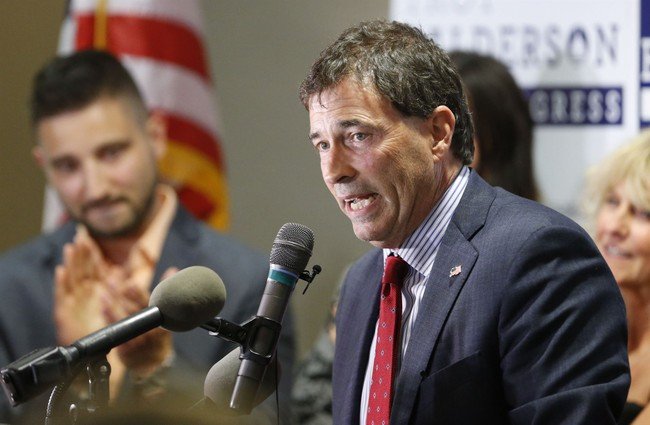We are approaching the final stretch of America’s extraordinarily long (six months and nine days) primary election season. About three-quarters of Americans had the chance to vote for Democratic and Republican candidates for Congress and for state and local offices.
Their choices tell us something about the November results. But not everything, including which party will win the seemingly tight battle for a majority in the House of Representatives.
The consensus of those following this election most closely is that Democrats will win. The latest evidence comes from Republican state Sen. Troy Balderson’s ultra-narrow victory in a special election for Ohio’s 12th congressional district.
Balderson defeated Democrat Danny O’Connor 50 percent to 49 percent, or just 1 percent, in a district that gave President Donald Trump an 11 percent advantage in 2016 and Mitt Romney a 10 percent advantage in 2012.
Ohio 12 is one such hybrid district, half suburban and half urban, half rural and half miniature town. It includes part of the Ohio State University campus and the affluent northern suburbs of Columbus, the fastest-growing huge metropolitan area in the Midwest, as well as most or all of several counties to the north and east.
Romney won both the suburbs and the miniature counties by narrow margins. Trump was defeated in the affluent suburbs but won the miniature counties by a landslide.
On Tuesday, and even more so in early voting, Democrat O’Connor won the suburban counties by a 2-1 margin. Republican Balderson did well but not as far as Trump, amid lower turnout in miniature counties.
In other words, Republicans performed worst of the last two candidates, losing even more support among white college graduates and failing to replicate Trump’s successes among whites without a college degree.
This pattern has been evident in previous special elections and helps explain how Democrats were able to win a majority in the House. It is widely attributed to Trump’s belligerent and provocative style.
There’s some truth to that, of course, but it’s not the whole story. The swings from Romney 2012 to Trump 2016 were actually miniature by historical standards, and the constancy of Republican and Democratic percentages over the two decades since 1994 has been historically miniature, with steady increases in all-party voting through 2016.
What we have also seen in congressional elections since the mid-1990s is a resistance to single-party control. In close presidential elections, only a few voters need to turn away in a non-election year to achieve this result, and with the exception of the elections just after 9/11, they have.
Former President Bill Clinton faced Republican House and Senate seats for six of his eight years in office. Then-President George W. Bush’s Republicans won seats in 2002, but faced a Democratic House for two years and a Democratic Senate for three and a half. Former President Barack Obama faced a Republican House for six of his eight years and a Republican Senate for two.
You can chalk up each presidential party’s losses as the predictable result of some combination of extremist abuse of power, legislative incompetence, personal scandals, and insider suspicions. But for one reason or another, they still happen, and they could happen again this year, when Republicans could lose their majority in the House and potentially, despite their seat advantage, lose the Senate as well.
But there is reason to be cautious about predictions. Big Republican gains were not seen at this point in the 1994 cycle (I wrote the first article predicting they could win the majority, in July), nor large Democratic gains in 2006, nor a Republican Senate victory in 2014.
Local polls from that far back are also not always a reliable indicator of November. Outside of early June, Democrats had a 6-8 percent lead all year in RealClearPolitics’ overall congressional vote poll. But that suddenly dropped to the low end of that range, which could give a Republican majority in the House (because Democratic voters are demographically concentrated in relatively few districts).
Is this a sign of a real change in sentiment, or just statistical noise? No one knows for sure. Corporate America seems to be combining with wealthy Trump haters to give Democrats a significant financial advantage in many key races. But two years ago, sharp people were overwhelmingly behind Hillary Clinton.
In this race, as in this year’s House elections, Democrats started with a turnout win, but Republicans managed to pick up enough votes in the right places to win — as happened this week in Ohio 12 and could happen again in November.


